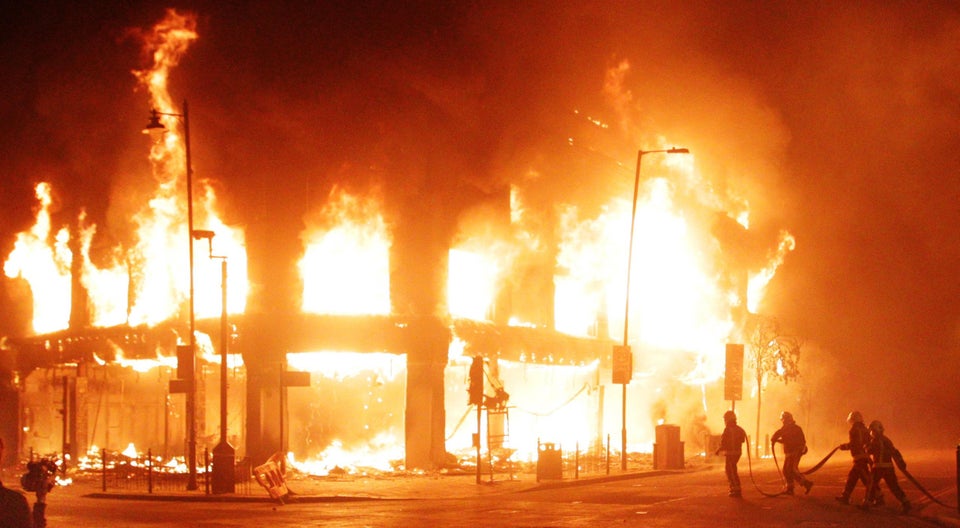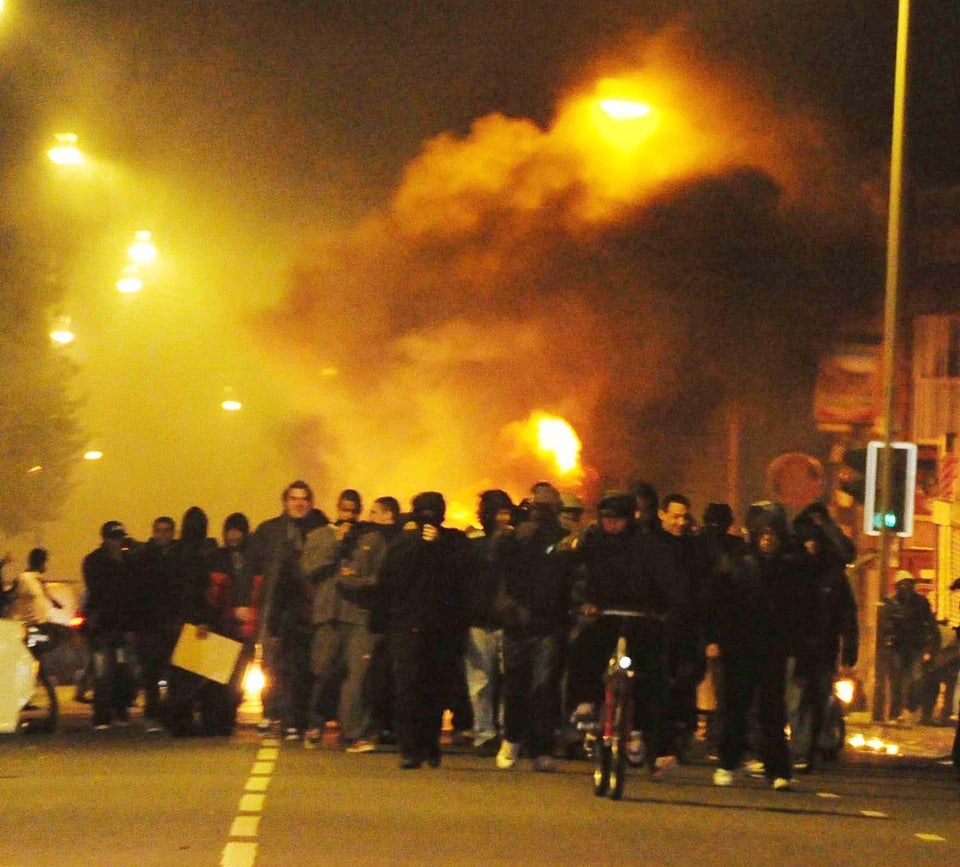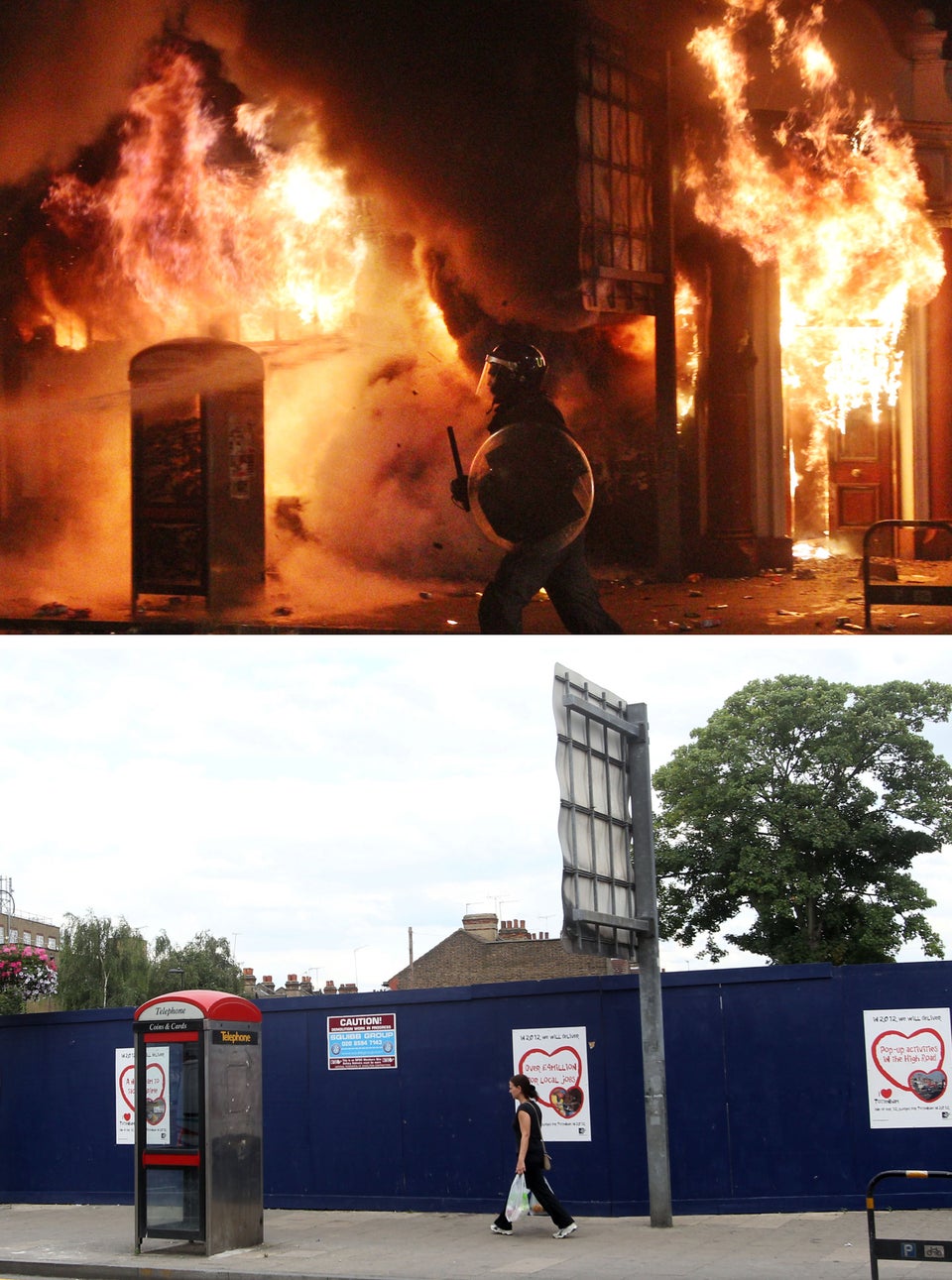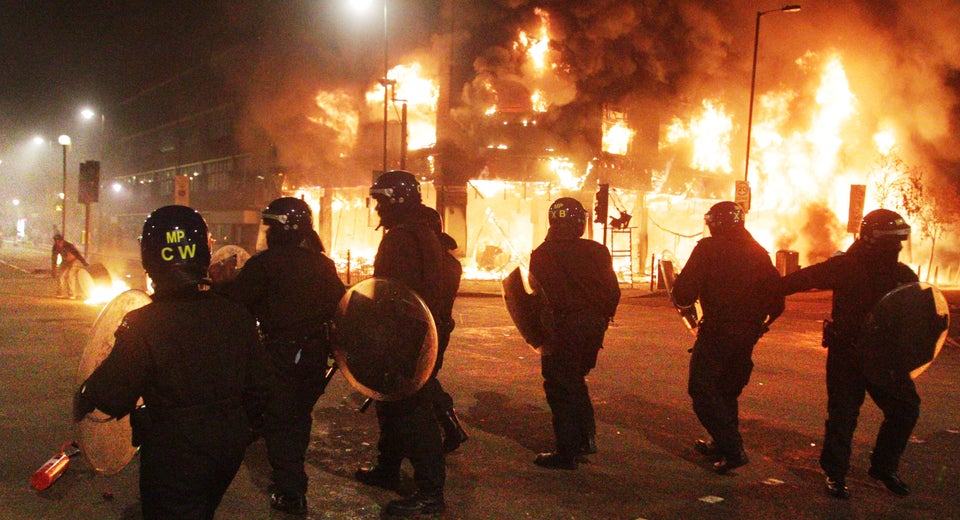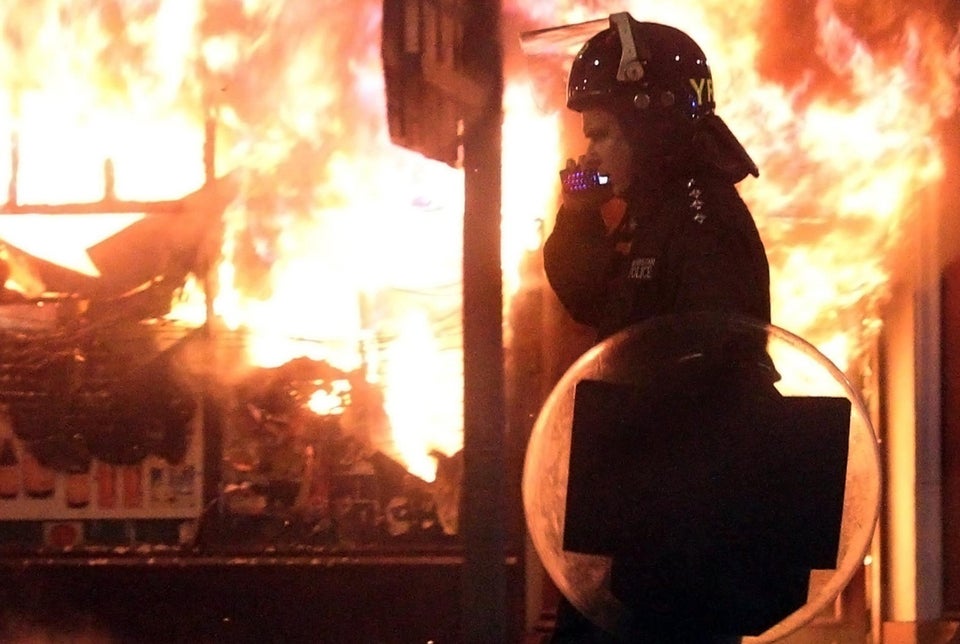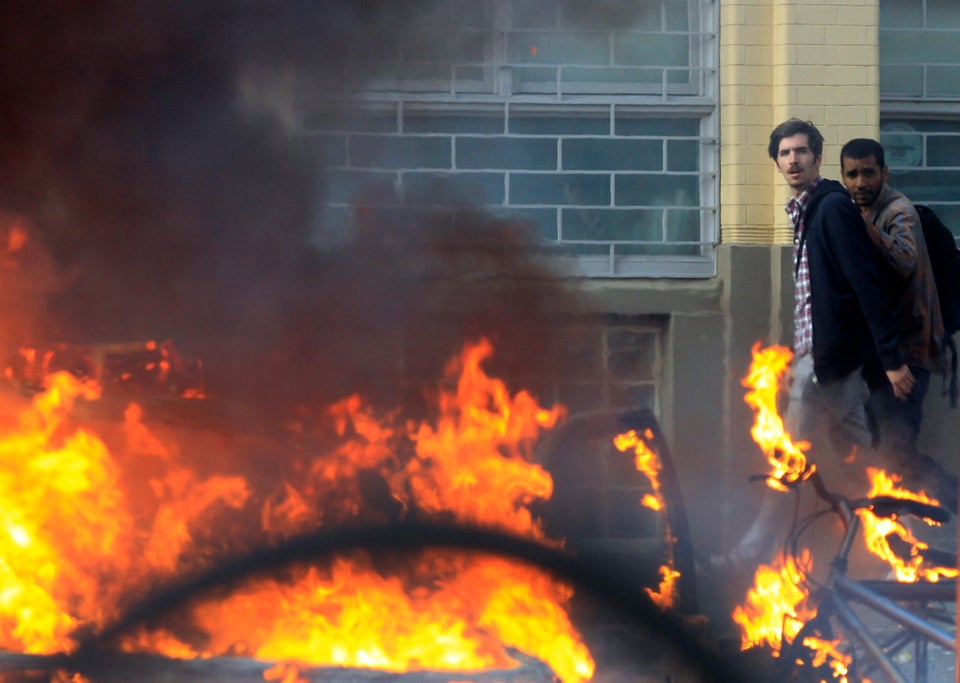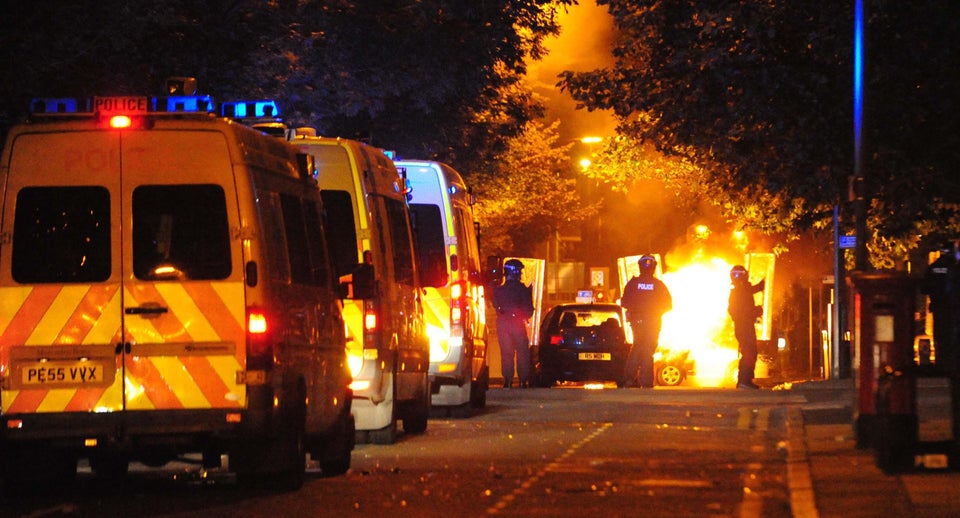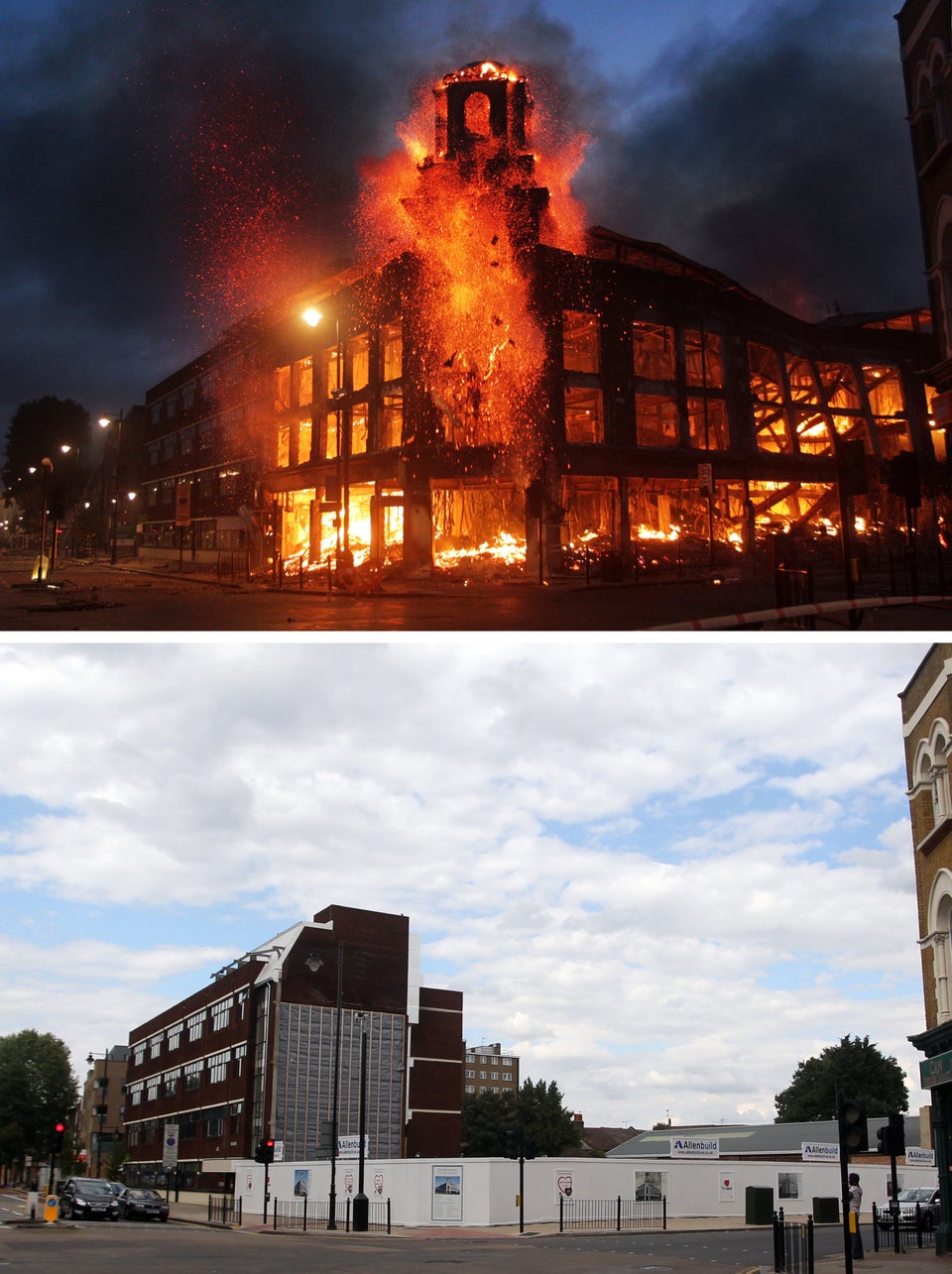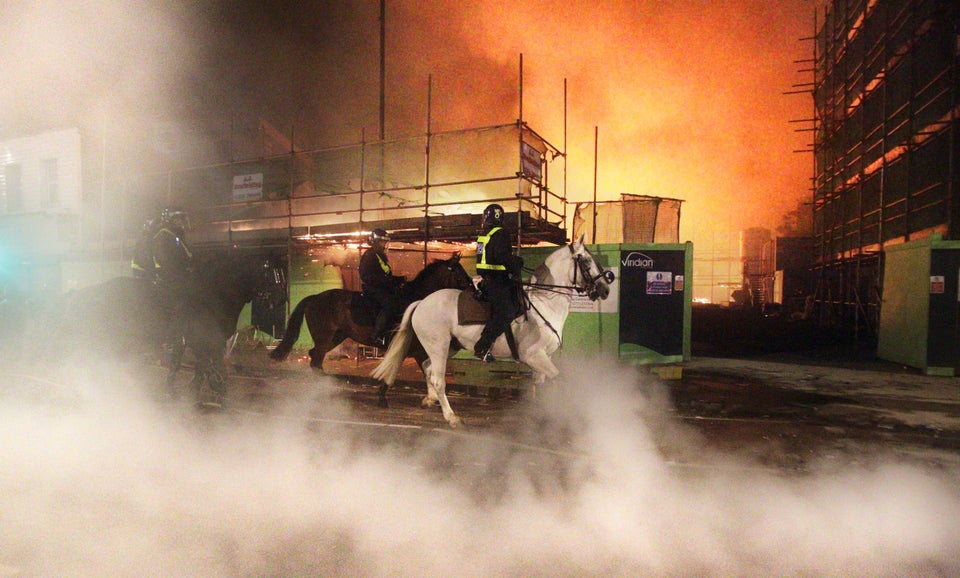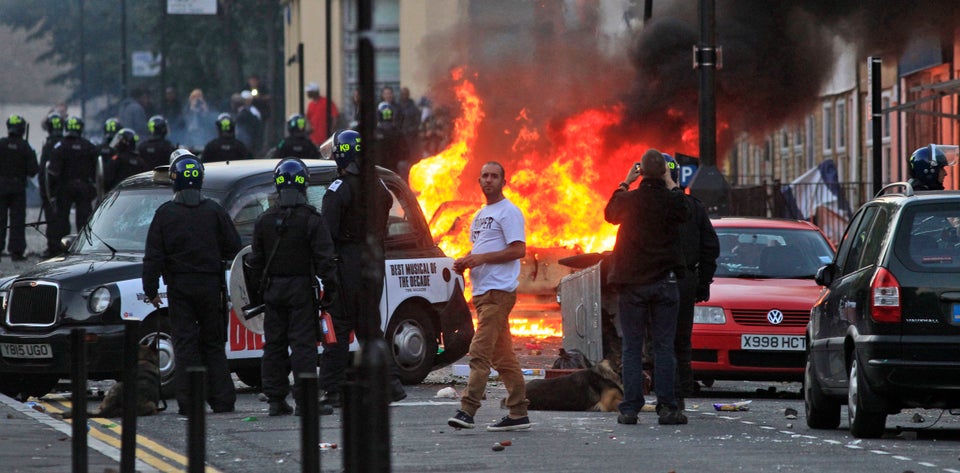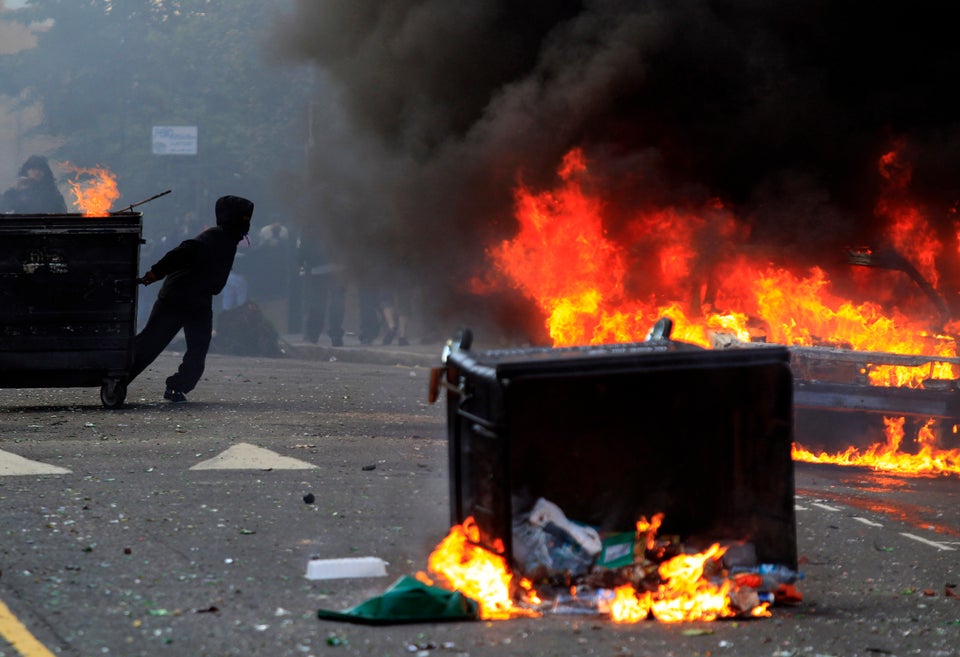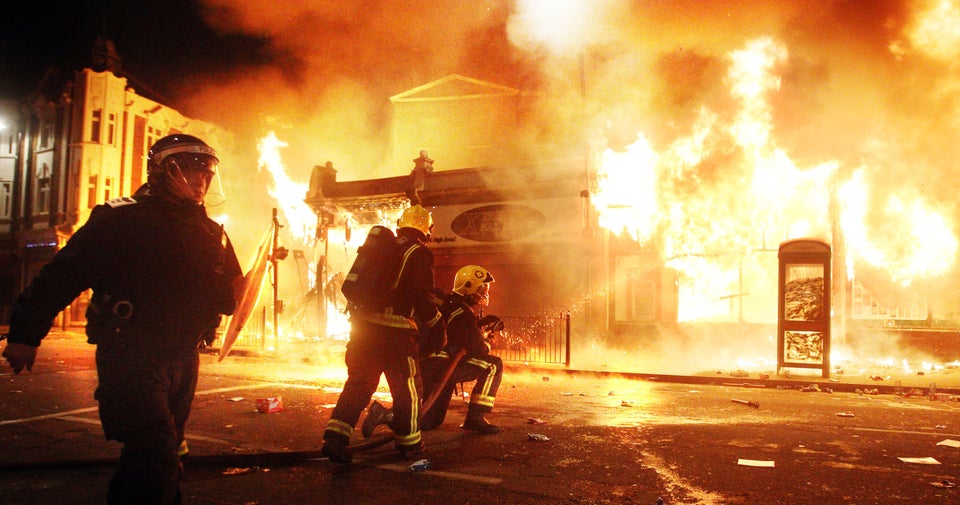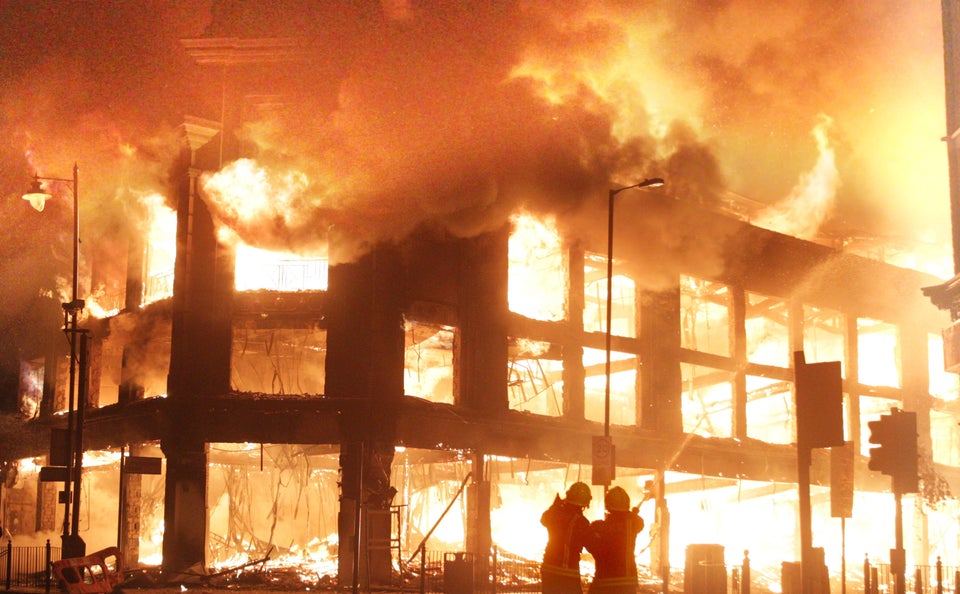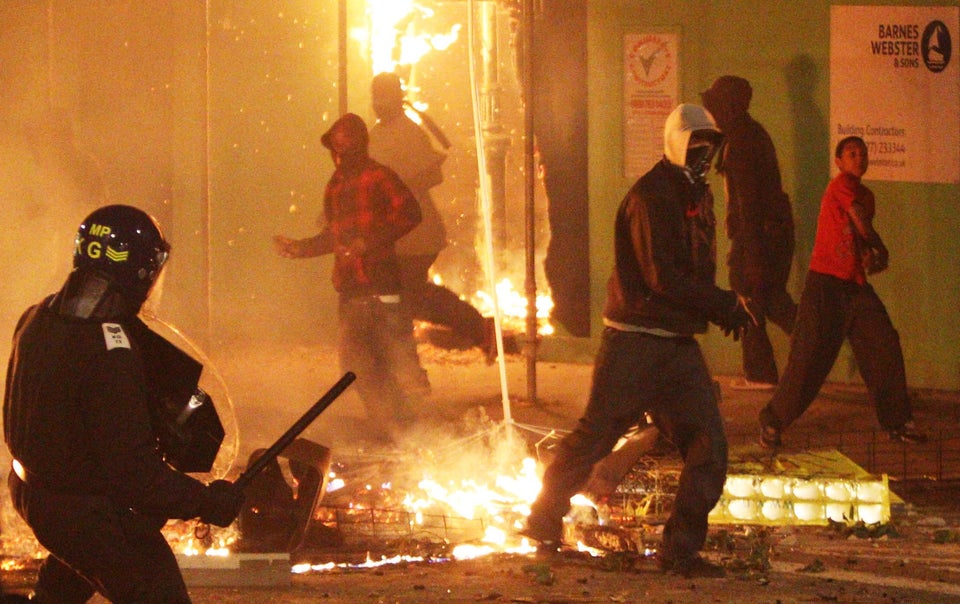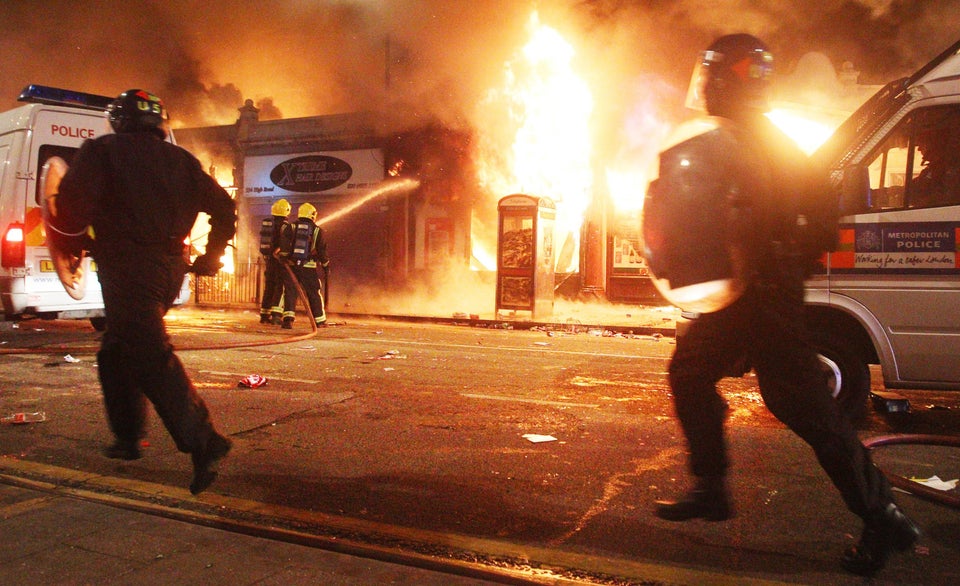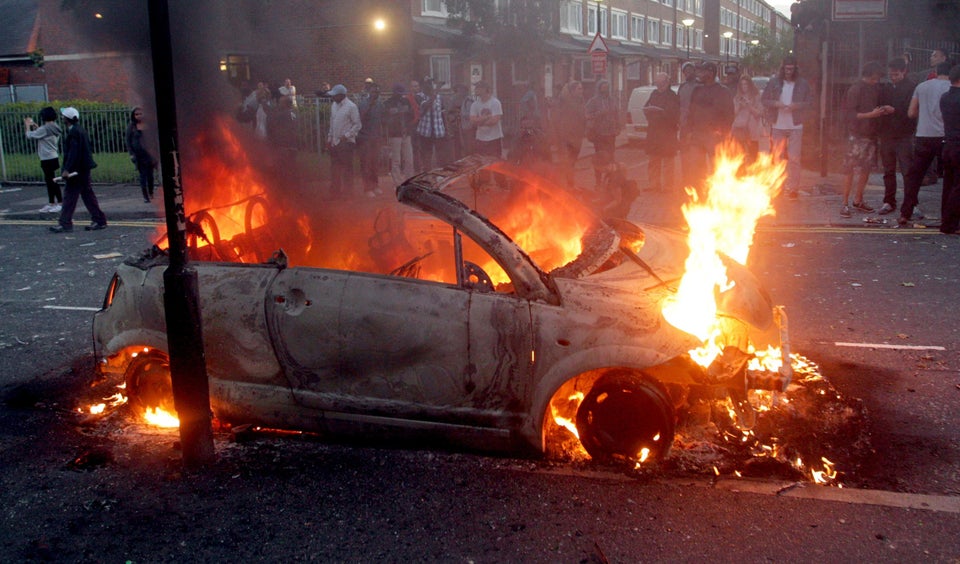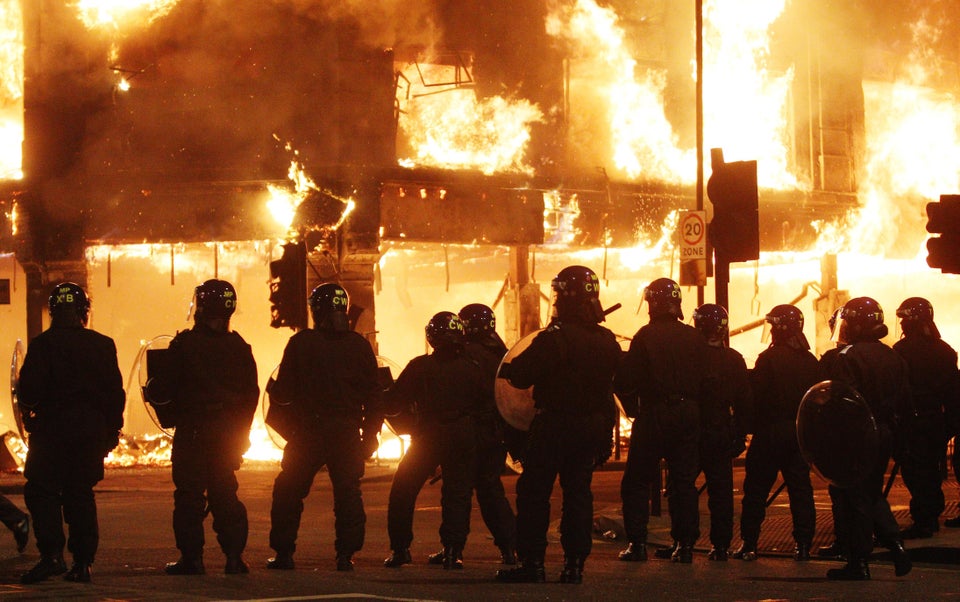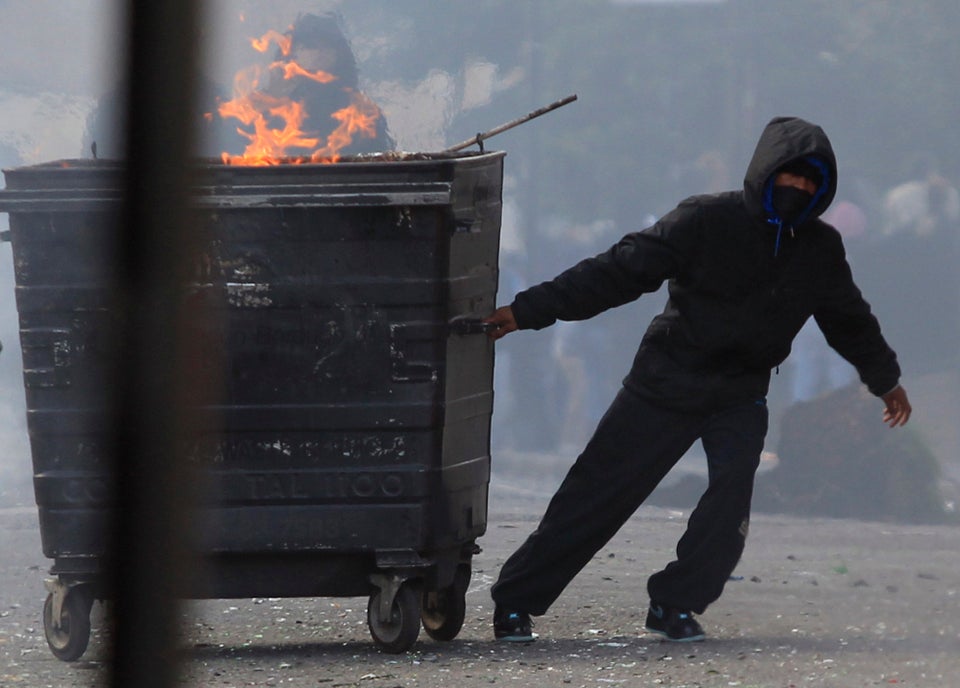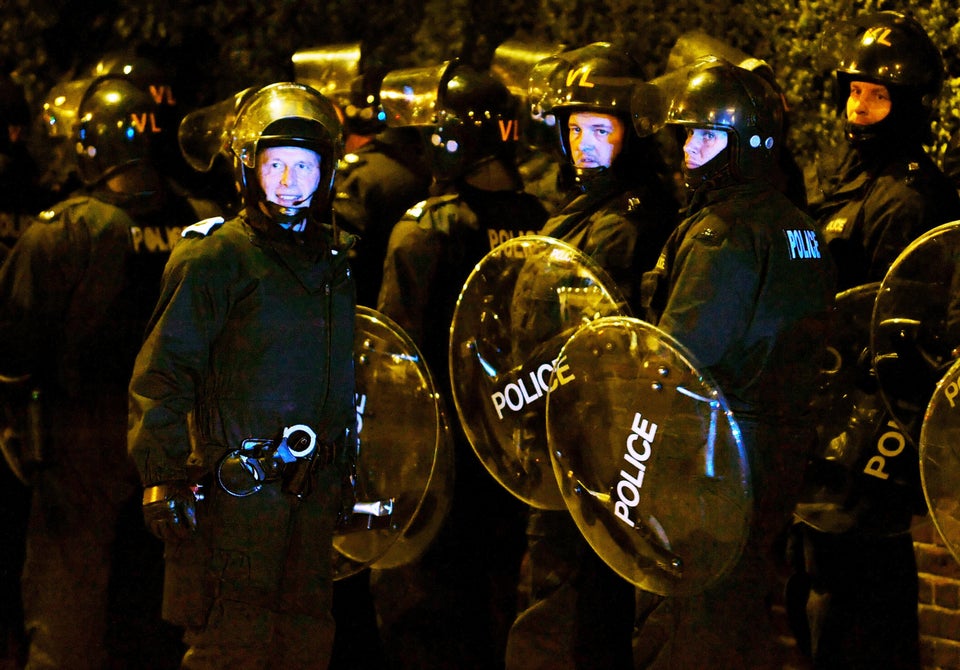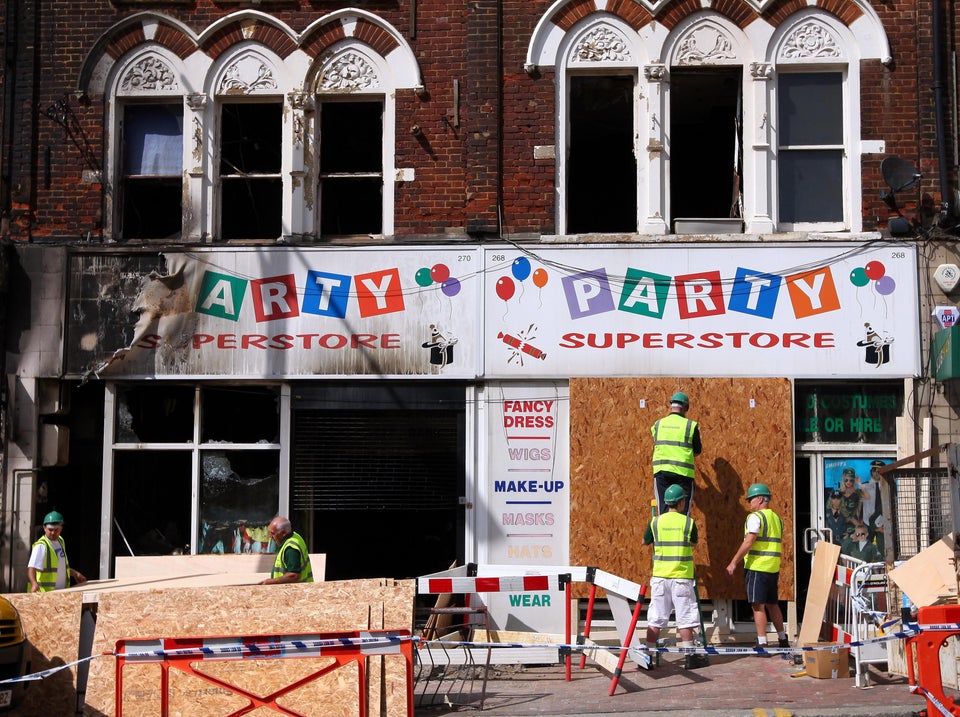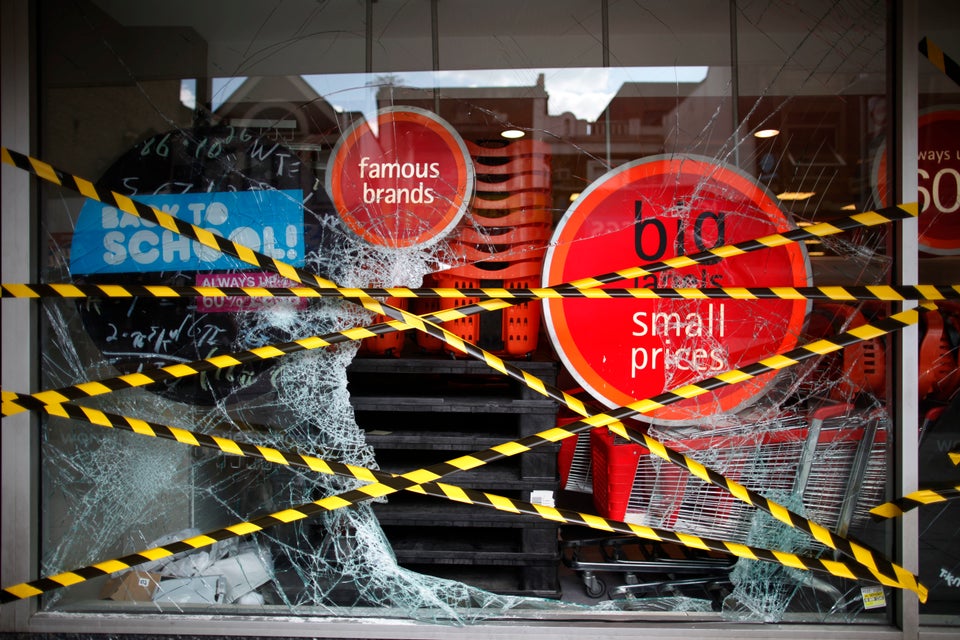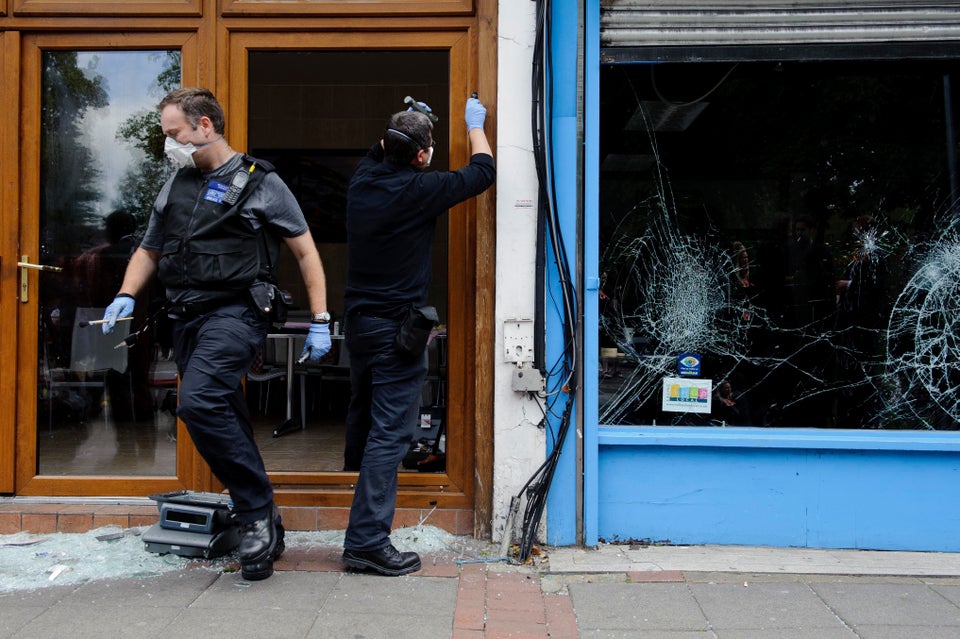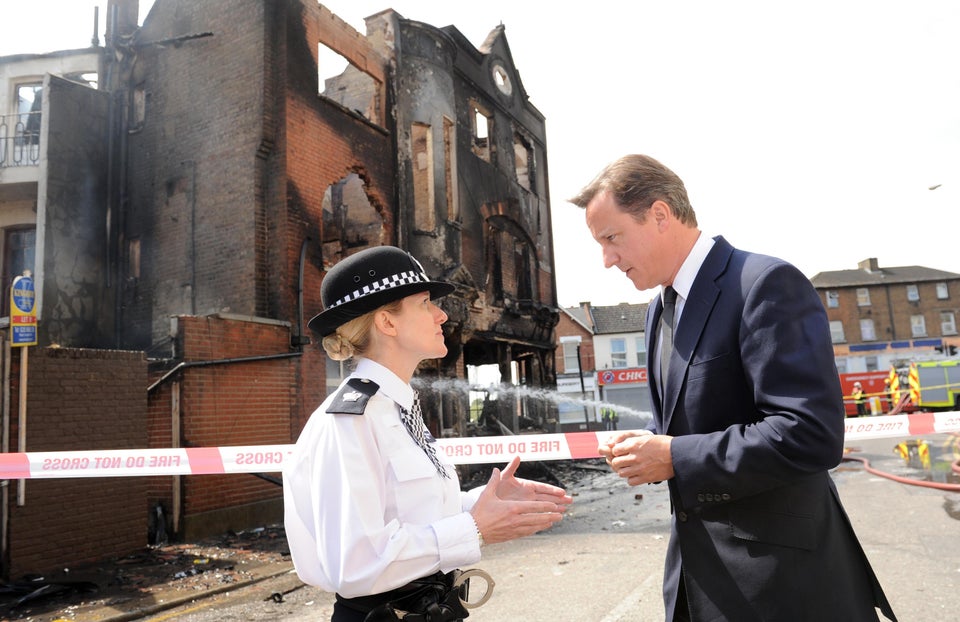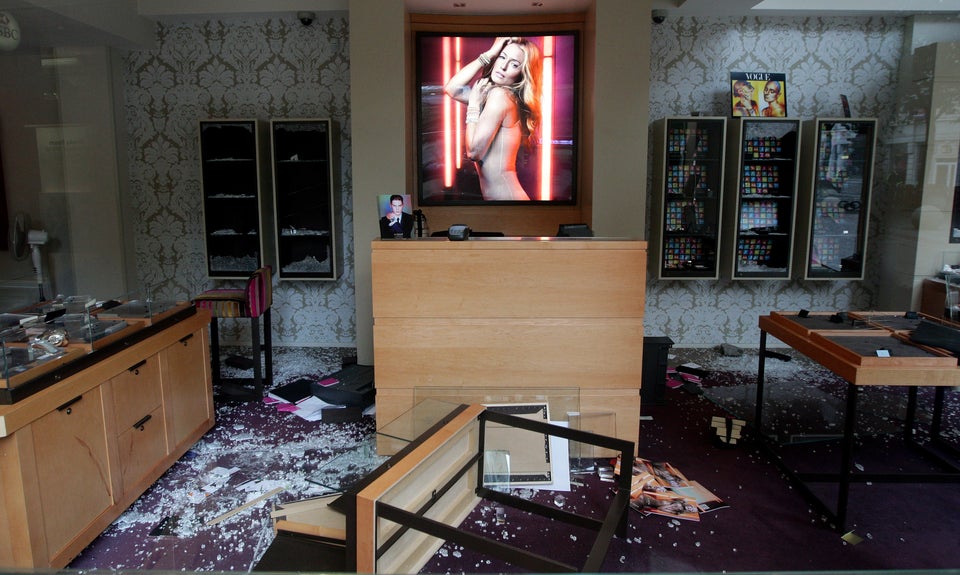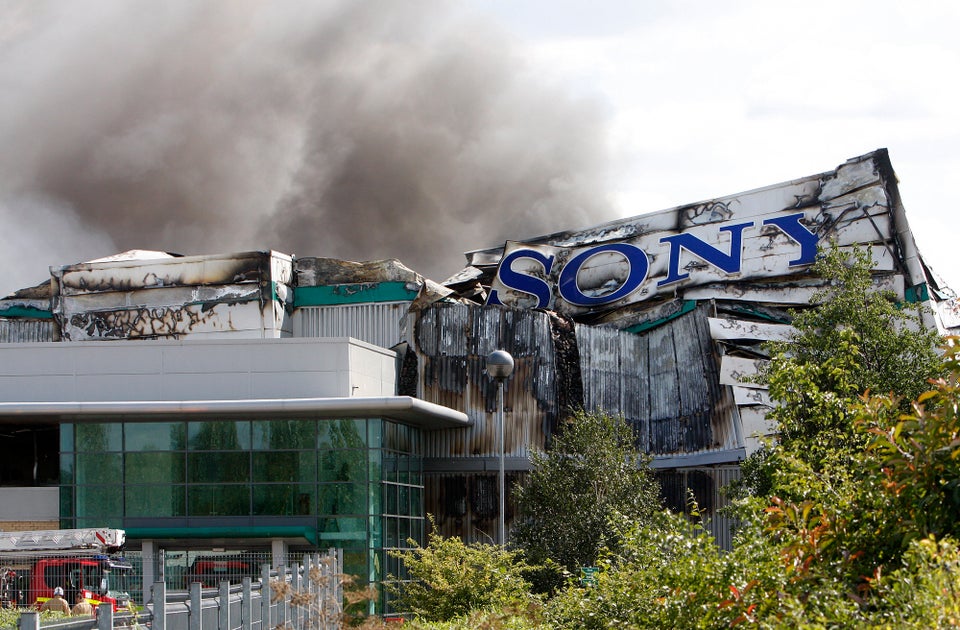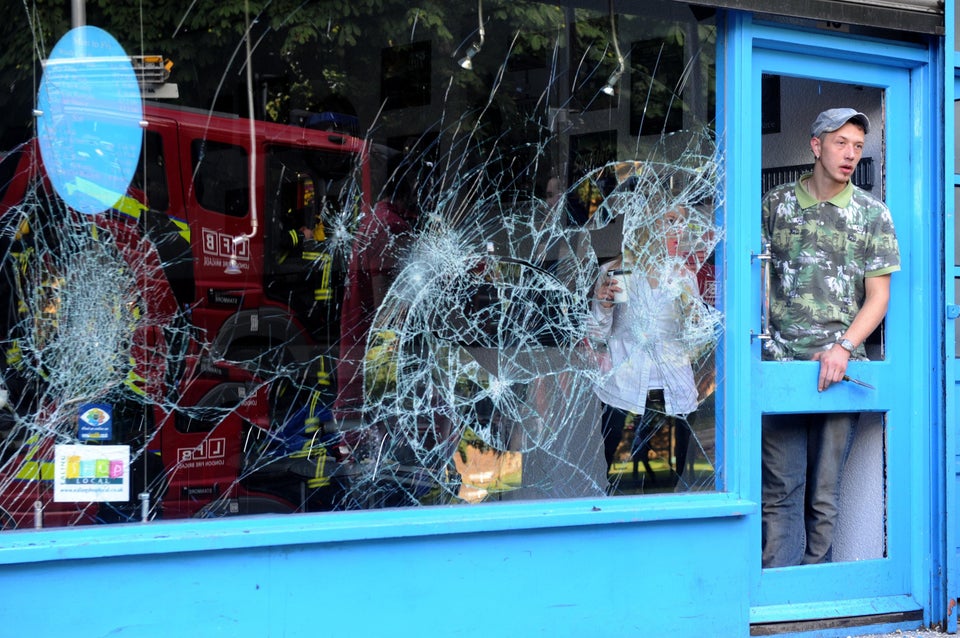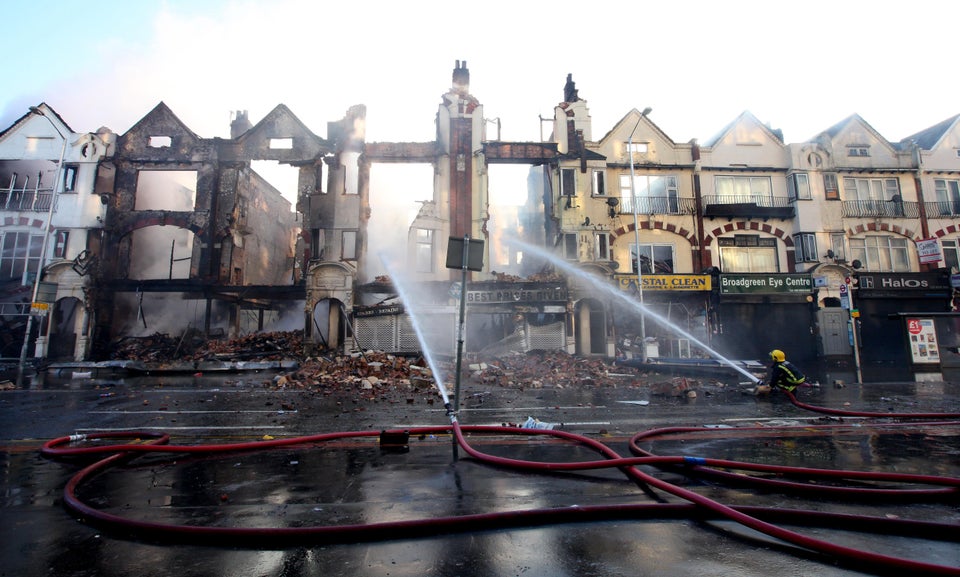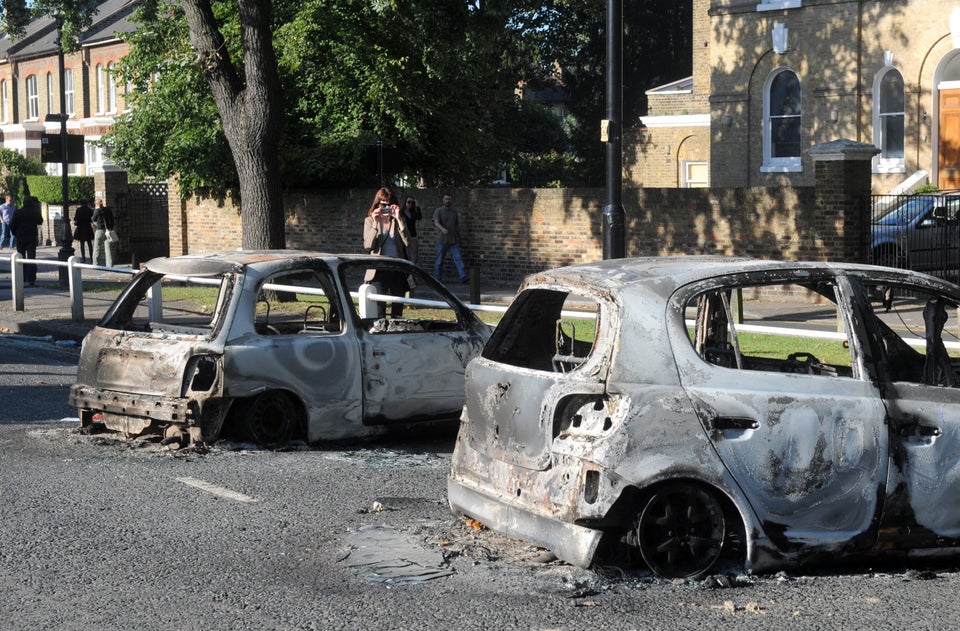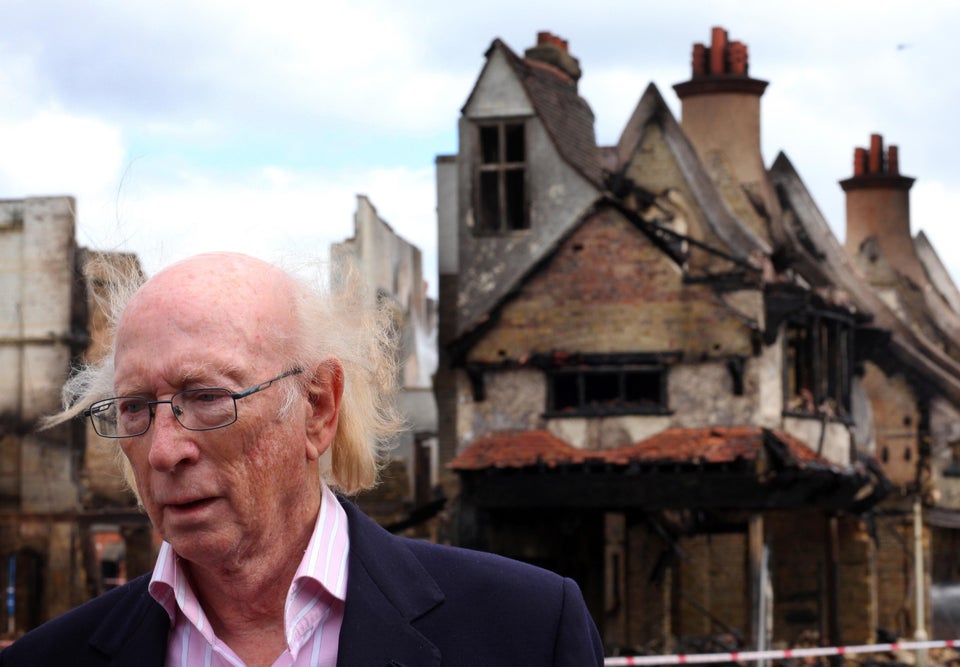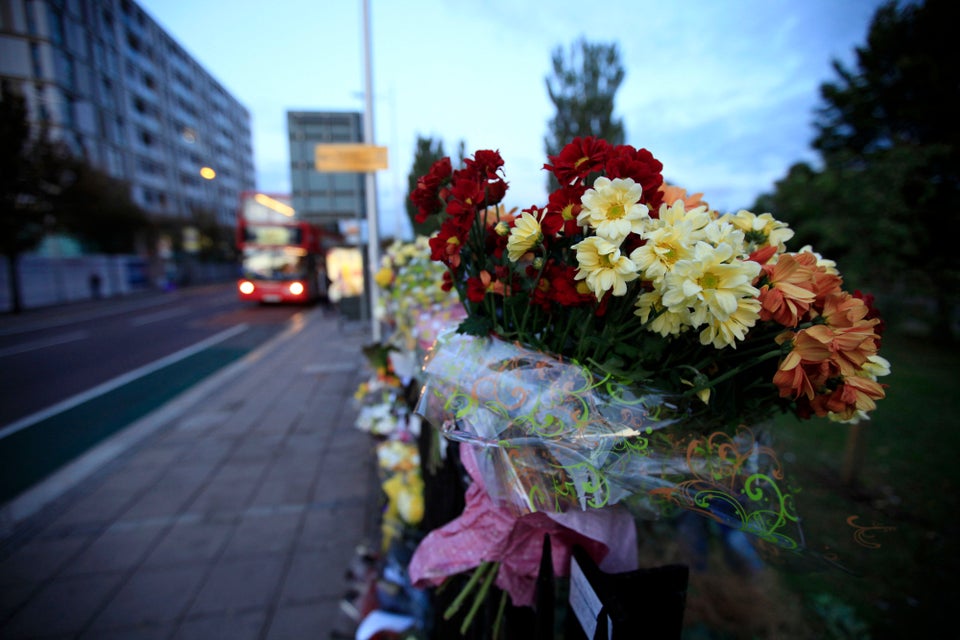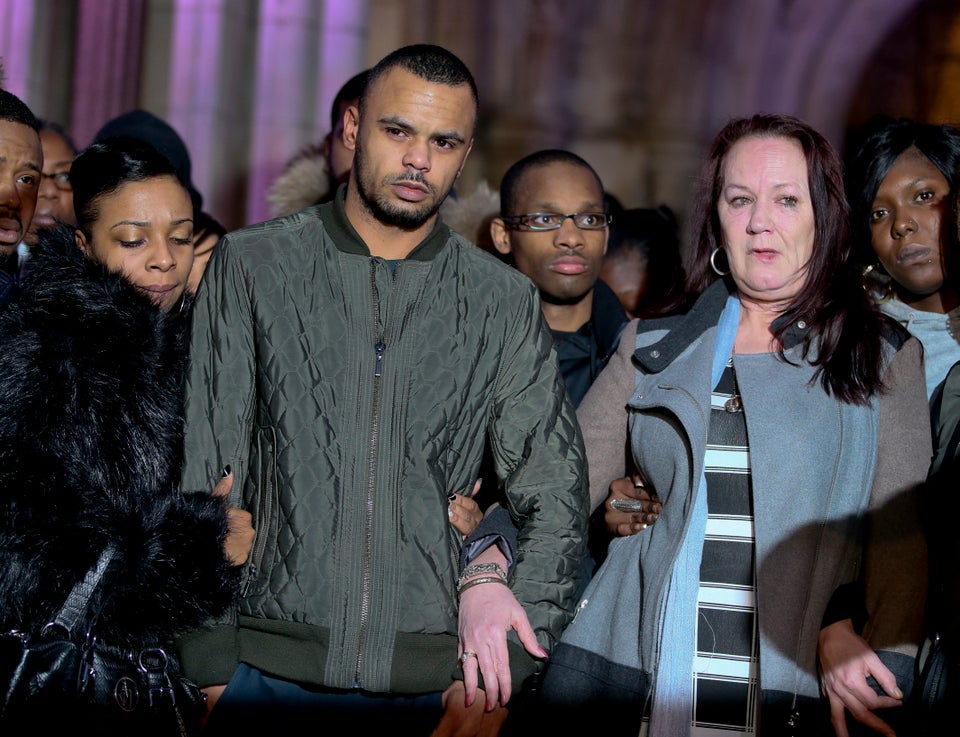Seduced into the streets in their thousands, fists raised in defiance, Brits were united - by events in America.
Within two days in July, US law enforcement officials had shot dead two men - Alton Sterling, while he was pinned to the ground in Louisiana, and Philando Castile, as he sat in his car in Minnesota.
Sterling’s “execution”, was distressing enough, but a mere entree to a far great horror served to the world in real-time on Facebook the very next day. Castile’s girlfriend live-streamed his death.
The footage ricocheted across social media, each retweet magnifying the injustice, prompting demonstrations across America and the UK.
“America you are not alone”, one demonstrator said, during a march along central London’s Regent Street on July 8, a sentiment repeatedly echoed in the following days by protesters gathering across the UK under the banner, ‘Black Lives Matter’.
An event was held in Brixton, south London, on July 9, before returning to central London on July 10. In Nottingham - the first Black Lives Matter chapter in the UK, and soon-to-be the first affiliated with the US - two “die-outs”, were held.
For Stafford Scott - the corner-man supporting the families involved in some of Britain’s most high-profile racism cases ( “police fuck ups” as he puts it) - the demonstrations “grated”.
“Justice is like charity, it begins as home,” he said from anti-racism charity, The Monitoring Group’s, offices in Vauxhall, south London, where to this day he still fights to expose the “truth” behind the police shooting of Mark Duggan on August 4, 2011, a killing so controversial it led to events that sparked the London riots - a four-day orgy of violence and destruction that claimed five lives and left £200 million of property damage.
Scott: “When you cannot get justice for people that look like you in your own country, you ain’t got no chance for people that might look like you somewhere else.
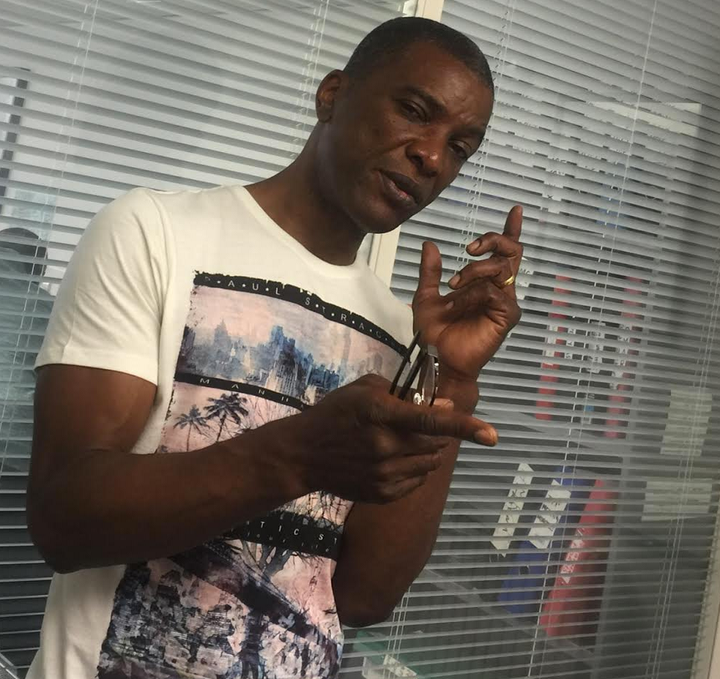
“It’s great seeing thousands out there... brilliant... but thousands of people just walking around aimlessly, or at the American Embassy, when the American ambassador has gone home for dinner... it does grate on me.”
This is why: “When I have to talk to the parents of Jermaine Baker (shot dead by police in December 2015), and Pam Duggan, the mother of Mark Duggan, and explain to them why they can’t get justice and why our young people are more interested in what is happening in America, than England, it irks me.”
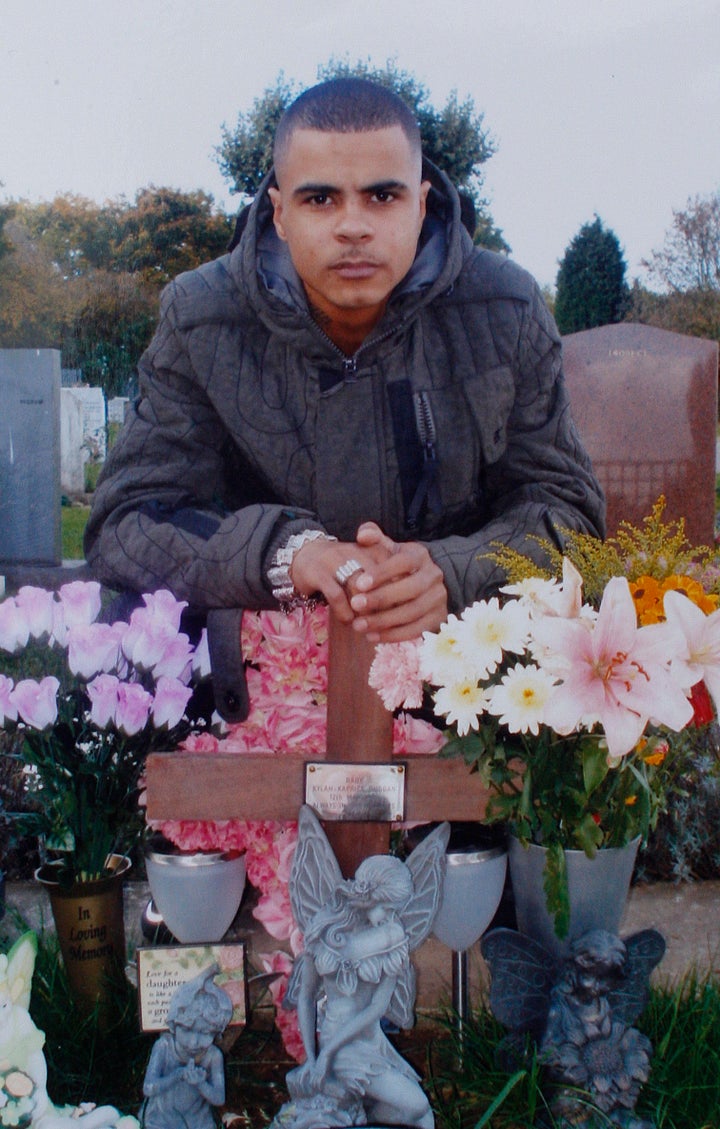
Scott has been battling racism all his life, so much so that he claims to be a “metaphor for the impact” of it.
And at 56 years old, in north London, where he now resides to be close to his wife’s mother, he still feels it.
“It doesn’t help,” Scott says, of moving from Tottenham to Stoke Newington, whose streets are lined with cafes and candle-shops, puppies and prams.
“It is nice to have my kids there, because there’s no gangs. But the newcomers, they tend to ignore us. Act like we’re not there.”
He adds: “It’s strange. Everyone is walking around and they don’t speak to each other. They create a village, but they don’t act like one.”
Scott is tall, with a teenager’s physique, but is not imposing. He has a grace about him, earned through a struggle that’s eroded his aggression.
Arrested under “sus laws” - a now defunct stop and search law under the 1824 Vagrancy Act - at 17, Scott felt “criminalised”, so began acting like one.
“I went right off the rails and ended up in prison. Probably justifiably. I did all the things... if police were going to arrest me for being a criminal, then I went out and behaved like a criminal, so I did robberies, stabbed a National Front member... got a couple of years for that.”
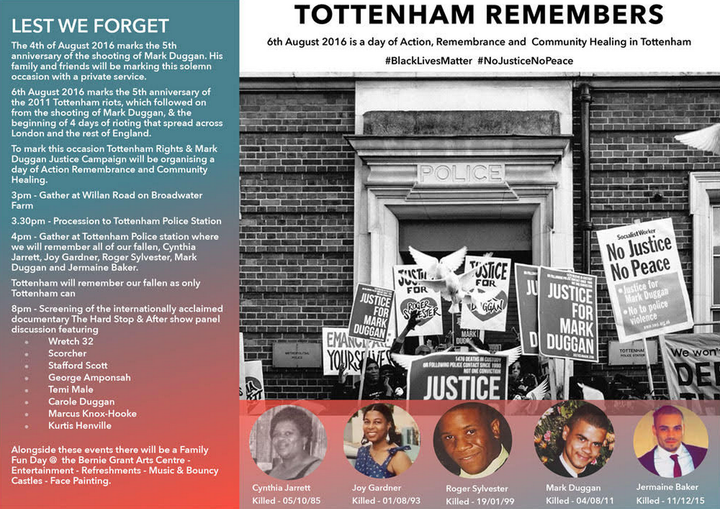
While inside he read up on the American civil rights movement - which, “taught me what it really meant to be a black man in a white man’s land”, and upon release, he acted with his head, not his hands.
“We have an old saying, ‘he who knows better, should do better’, and that’s what I try to do, and what I have tried to do since.”
On August 6 - two days after the fifth anniversary of Duggan’s death - Scott, along with Tottenham Rights and the Mark Duggan Justice Campaign, are holding a day of “action, remembrance and community healing” to mark the five Tottenham residents killed by police since 1985.
“Most people will only know two of them, and only because we rioted,” Scott laments, adding that when he calls meetings 300-400 attend “and that’s a really good meeting”.
The five Tottenham residents being remembered are:
Cynthia Jarrett: Died of heart failure during a police raid on her Tottenham home on October 5, 1985, which, in part, led to the Broadwater Farm riot the following day.
Joy Gardner: Three police officers were acquitted of manslaughter after Gardner died on August 1, 1993, four days after being bound and gagged while served with a deportation order.
Roger Slyvester: Died on January 19, 1999 after slipping into a coma after being arrested by eight police officers. A corner later ruled he was “unlawfully killed”.
Mark Duggan: Shot dead by police after being stopped in a taxi in Tottenham on August 4, 2011 while transporting a gun.
Jermaine Baker: Shot dead by police outside Wood Green crown court during an attempt to free two prisoners on December 11, 2015.
Since 1990, across the UK, there have been 156 deaths of black and minority ethnic people in police custody or following contact with police, of which 86 involved the Met. In that time there have been only a handful of unlawful killing verdicts.
“Roger Sylvester, when they killed him, they said he had the power and strength of how many people,” Scott says, getting to his feet, waving his arms in disbelief.
“Joy Gardner, they said she was the strongest woman they ever came across.
“There’s something about us that when we are in front of the polices’ eyes we seem to grow in size and capability. There’s something about us that puts fear into these peoples’ hearts and with this fear, and bias, and prejudice they already have... we have no chance in these confrontations.”
As happened following Duggan’s death, on August 6, Scott will lead those in attendance from Broadwater Farm to Tottenham Police station - where on the same day five years ago, the London riots kicked off - which some say was due to police’s refusal to engage with Duggan’s family.
The Hard Stop, a critically-acclaimed documentary which details the aftermath of Duggan’s killing, released in cinemas in July, will be screened. The title refers to the police tactic used to pull over the taxi Duggan was in.
Baker’s death, the most recent being remembered at the event, according to Scott, is an “ID of Mark Duggan, and absolute mirror of Mark Duggan, four years on”, and in a lot of ways, that’s true, expect for one very heartbreaking fact - no one seemed to care. There were no riots. No protests. And barely any media coverage beyond the initial titillation the jail-break shooting and subsequent fabricated claims of gangland links to Duggan, inspired.
For Scott, it played out in the same depressingly predictable way and showed “absolutely nothing has changed” since the London riots of August 2011. First comes “murder”, then the character assassination “orchestrated by the police” to “explain or justify the killing”.
Baker, 28, was part of a five-man crew attempting to spring Izzet Eren from a prison van near Wood Green crown court on December 11, 2015 when he was killed by a single gun shot to the neck while waiting to carry out the “bold and audacious plot”.
Eren, and another man, Erwin Amoah-Gyamfi, were due to be sentenced that day, having been arrested two months earlier in possession of loaded guns. Baker was sitting in the back seat of a car, 100m from the court, when he was killed without firing a single bullet - just like Duggan. His co-conspirators were arrested, and last month were collectively jailed for more than 30 years.
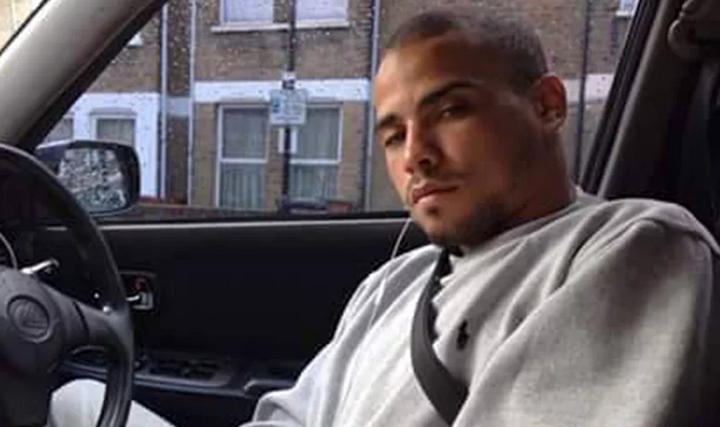
In the immediate aftermath Baker was made out to be a gangster with connections to the notorious Tottenham Mandem gang, the same criminal group Duggan was said to be a leading member of. An article in The Times on December 14 was headlined ‘Man shot by police was in Duggan gang’. Further evidence of his underworld credentials was offered by way of a Facebook picture of a tattoo on his hand of two clown masks, said to be popular with gangsters. Reports also suggested Baker was part of the fictitious ‘Bloodline’ gang. None of this was true, the Guardian reported days later on December 17.
After Duggan was shot - in what was initially, falsely, described as a shoot out - - police said he was among 48 of “Europe’s most violent criminals”, something Scott, and his family, have described as laughable: “Mark was a lad. He was a bit of a geezer. He wasn’t the baddest. We heard him described as one of the top 40 toughest gangsters in Europe. I could find 40 boys that are tougher, badder and rougher than him on Broadway Farm Estate where he grew up,” Scott said.
“It is a thing that happens in the hood. Turks give out big contracts to other Turks and they employ some young, dumb, black kid to carry it out (crimes) for a pittance"”
Baker was simply a pawn being used by Turkish gangsters, Scott believes, “he wasn’t even a lad”. Little is known about Baker as his family only issued a brief statement after his passing and the media lost interest in his story. He was a dad, and lived on Tottenham’s Love Lane Estate. When the youth clubs closed, Scott said, “the youths started to congregate, and a few of them, including him got Asbo’d (issued with a anti-social behaviour order)”. This, “forced” him on to Tottenham High Road, “where the Turks control the weed business, the skunk business... and he got recruited”.
“I don’t even know if he was a dealer, but he was low level... he was on the fringes rather than in any front line crew.”
Scott added: “Ultimately they’re (Turkish gangsters) using the black guys... it is a thing that happens in the hood. Turks give out big contracts to other Turks and they employ some young, dumb, black kid to carry it out (crimes) for a pittance.”
Yet, Scott claims, very few of these top level criminals are ever on Trident - the Met gang squad’s - radar, “because they can’t catch them and it ruins their bullshit statistics”. Instead, he says, they “chase fucking black kids around estates”.
Scott, who worked as an advisor for Trident for seven years to ensure police target “criminals, rather than the community as a whole”, said: “They don’t target the source. When I look at the Matrix (the police intelligence system) I see little twats, 16-17-year-olds.
“We call them, ‘hurry-come-ups’, because they hurry-come-up, because they’re not known, and then everyone knows their name, then within a few days they’re gone, because they’re idiots. The hardcore ones, the real heavy ones, the Tottenham Mandem, not just people that happen to come from Tottenham, the real heavy ones, most of them are not on this list.
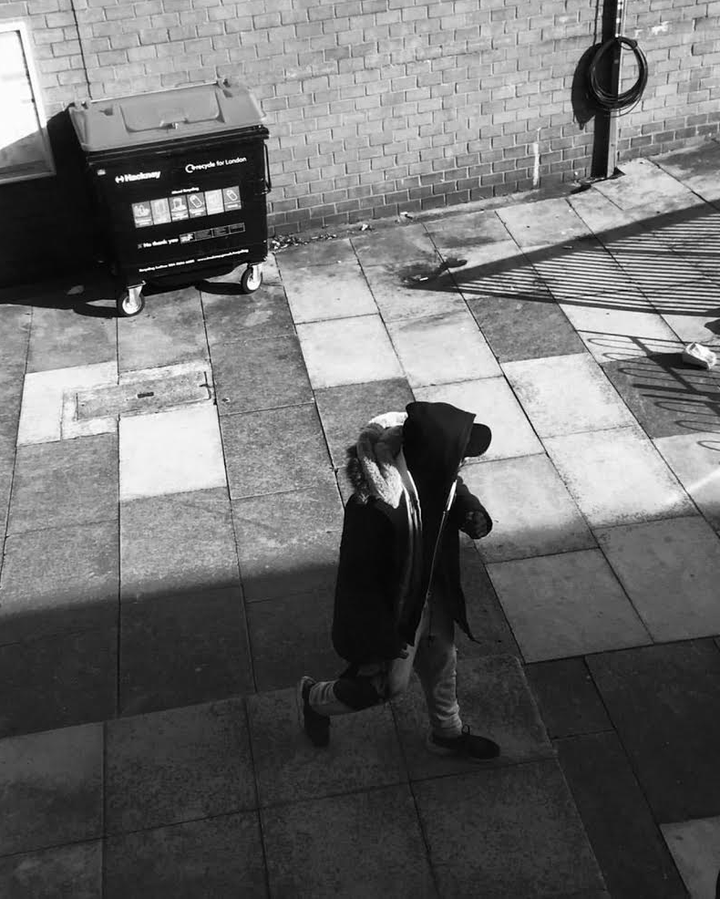
“They know who they are. They’ve been trying to catch them for generations. They’re not very good at it. It makes them look bad. So they leave them off the lists... get the little idiots, get them as long a prison sentence as they can. It is absolutely mad.”
A report published on January 27 called Dangerous Associations vindicates Scott’s claims. The study found “evidence that black and minority ethnic people are serving long prison sentences because of unfair and racist criminal justice practices”.
“This apparent ‘gang’ affiliation’ is used to secure convictions, under joint enterprise provisions, for offences they have not committed,” the research by Williams and Becky Clarke, senior Lecturers in Criminology at Manchester Metropolitan University found.
The researchers said that more than three quarters of the black and minority ethnic prisoners they questioned told them that the prosecution in their cases had claimed they were members of a gang, whereas only 39% of white prisoners had been presented to the court as being affiliated to a criminal group.
The study found the lists of gang members maintained by police included people who “have no proven convictions and… those who have been assessed by criminal justice professionals as posing minimal risk”.
“There’s something about us that when we are in front of the polices’ eyes we seem to grow in size and capability. There’s something about us that puts fear into these peoples' hearts and with this fear, and bias, and prejudice they already have... we have no chance in these confrontations"”
While the odd tweet suggested riots could be sparked by Baker’s killing, nothing eventuated, possibly because police acted swiftly and were forthright with those most affected. A stark contrast to Duggan: Police didn’t even tell his family they’d killed him. The officer involved in Baker’s shooting was suspended almost immediately and within three days the Independent Police Complaints Commission had announced it was carrying out a homicide investigation. The IPCC investigation is ongoing and the officer remains on bail. An inquest into Baker’s death was adjourned last year so the IPCC could complete its work.
Both the Met and the National Police Chiefs Council declined to speak to the Huffington Post UK for this article, or to highlight any work done to improve police relations with Black and ethnic minority communities in the wake of Duggan’s shooting.
Scott wrote a piece for the Guardian on December 21, last year - days after Baker was killed - in which he said “there are signs that the police have learned the dangers of misinformation and have sought to head off the anger and rage that swept Tottenham, and then the entire country, after Duggan’s death”.
He detailed how the-then local borough commander, chief superintendent Victor Olisa, “quickly sought to engage with community concerns and better understand the impact” of Baker’s killing, and to explain how the various investigations into the death would unfold. A community meeting was called in Tottenham and the IPCC addressed those present. (When Duggan was killed the police chief went on holiday).
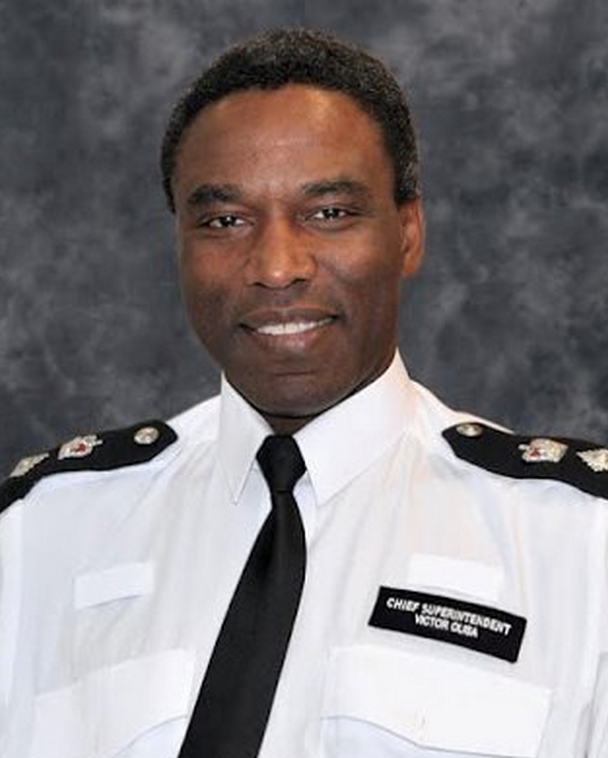
Last month, Olisa, the newly appointed head of diversity at the Met, spoke out saying the force still treats black people worse than white people and its own staff are also racially discriminated against.
You’d think such an acknowledgement would please Scott, but it doesn’t. He’s heard promises to fix the Met, “since the 80s”.
Speaking to the Guardian, Olisa said there was negative typecasting of black people which led to more force and coercive tactics being used against them by officers in the street. The Met even had a few activist racists, he said.
Olisa said this may have been a factor in deaths after contact with the police, including those of Sylvester and Jarrett. But with Duggan, the officer who was a poster boy for police in its landmark BBC documentary series The Met, said: “The danger was in the weapon rather than in the person.”
Scott: ‘We all choked... ‘hello, dickhead, did you hear what the jury said?’ he didn’t have the gun in his hand (when he was shot).”
Olisa also spoke of his own struggles for promotion, saying they left him on the verge of quitting. That’s what Scott says he should have done, rather than “just changing his tune”.
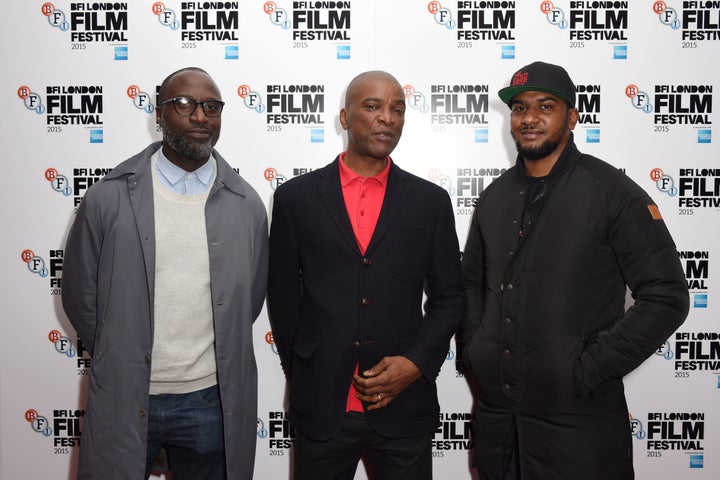
Scott: “For him to take the job it is just him saying, ‘I will hang around for another year’s salary’, he will not make one dot of difference... not even the best equality and diversity expert going into that environment... they would be sinking... to take the job is an absolute farce.”
In the Guardian article Olisa also voiced concern over the ethnic makeup of the Met, something the force promised to fix in 1999, after they bungled the 1993 murder of Stephen Lawrence so bad that there was a public inquiry. It concluded the Met was “institutionally racist”.
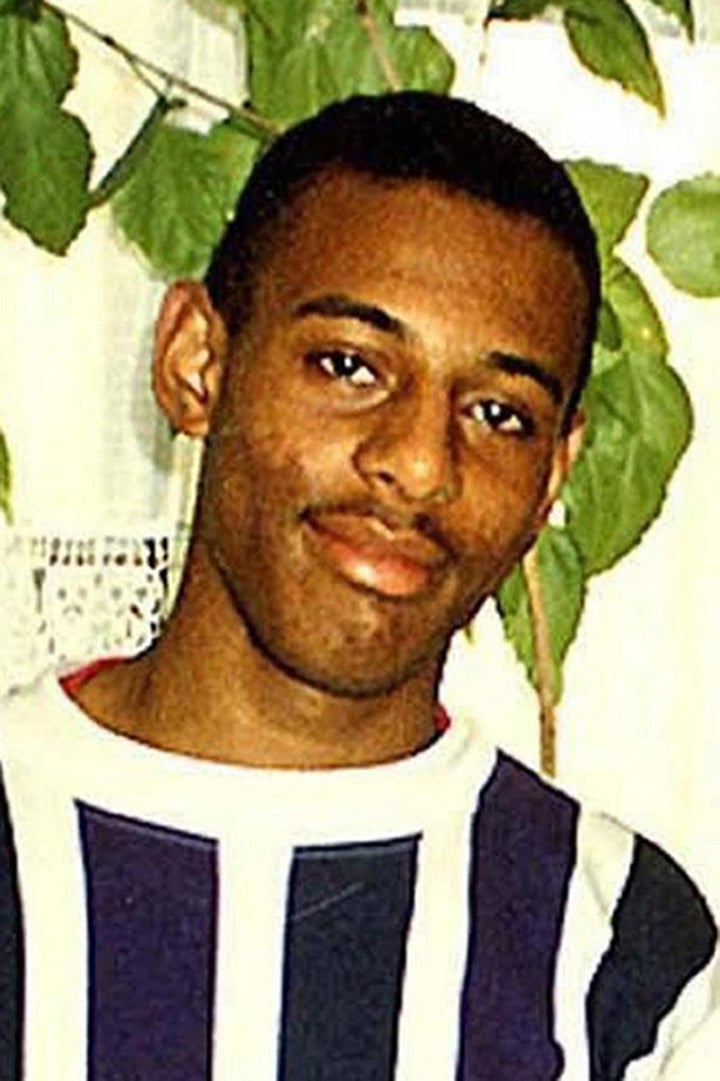
Currently 12% of Met officers are from ethnic minorities while London is 40% black and minority ethnic, a 28 percentage point gap, which is the biggest in Britain, the newspaper reported.
Scott: “One of the biggest cons we were served as a community following the riots in the 80s, was that we (the Met) are going to increase your representation and that is going to make the difference. The biggest con we were ever sold. It still has happened.”
Black Lives Matter was founded by three women - Alicia Garza, Patrisse Cullors and Opal Tometi - as a call to action for Black people after the 2012 killing of Trayvon Martin, an African-American teen, who was shot by George Zimmerman, a neighborhood watch volunteer in Florida - but has since become a global movement, with chapters forming across the globe. However, rallies are often activated via social media, by people with no, or very little, involvement with the group.
In the UK, three chapters have emerged in the last year: Nottingham, Birmingham, and most recently London, where a high school student was said to have organised their last event in memory of Sterling and Castile..
Nottingham member Lisa Robinson was dismissive of Scott’s criticisms, saying the UK group’s were primarily set up to focus on issues within their own cities - although her chapter launched in part, as a response to shootings in Ferguson, Missouri.
“These things (protests against racial discrimination) have been going on in our communities for a long time, it is just... a big veil has been lifted off and people are waking up to it... and the media are drawing attention to it. It does focus a lot of America which might confuse people, but it does impact on us because we are all global brothers and sisters, and as well as that, we highlight issues in our own country and cities.”
Robinson blamed “a lack of media coverage” for protests not being held for UK victims, but also cited “apathy” around protesting and concern about “what we can actually achieve”.
“People think they’ll be on their own, they’ll go to a protest, and then what? But now it is happening up and down the UK, across the world, they can see that it is big and they’re part of a bigger group... we can join with it and have impact.”
She added: “It doesn’t matter what brings people out... as long as they come out.”
And in Liverpool and London, earlier this month, that’s exactly what happened. Brits came out to protest about the death of one of their own - black teenager Mzee Mohammed, who died after being restrained by Merseyside police.
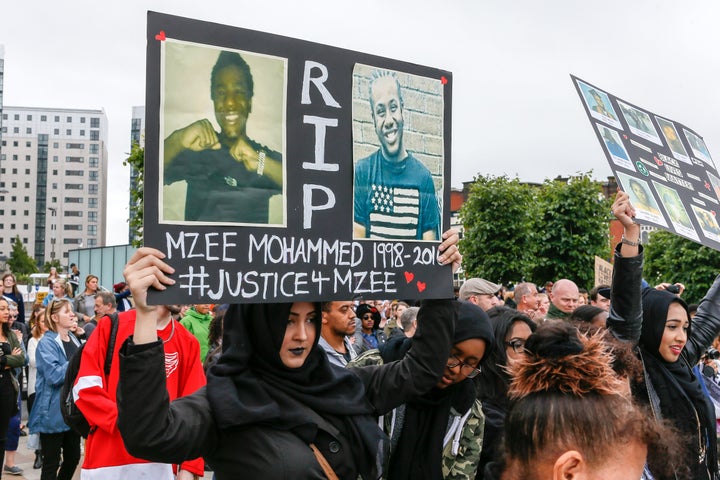
Following Mohammed’s death, on July 13, Black Lives Matter sent a statement of solidarity to activists in the UK that not only touched on the 18-year-old’s death, but that of Jermaine Baker too.
It read: “We send you solidarity, as we see Mzee Mohammed. We see Sarah Reed. We see Jermaine Baker, the 1,558 people killed by police in the UK and your struggle to gain justice for them.
“When you lose your family, know that we see that loss and we feel it too. We are all family.”
The message was further driven home by Marcia Ross, whose brother Sean died in the Brixton police station in August 2008.
In a blog for Defend The Right To Protest she wrote: “When we have protested on the streets across our country we have shouted out the names of Michael Brown, Trayvon Martin, Oscar Grant, Sandra Bland, Freddy Gray and more in solidarity with the US. We want the world to be aware of the names of the deaths in the UK too and for them to be remembered during this struggle.
“There is currently a worldwide public outcry about deaths in custody, especially for Black communities where the death rate is so serious in comparison to those of our white counterparts. This is why I am proud to say without apology that Black Lives Matter, at home and abroad.”
